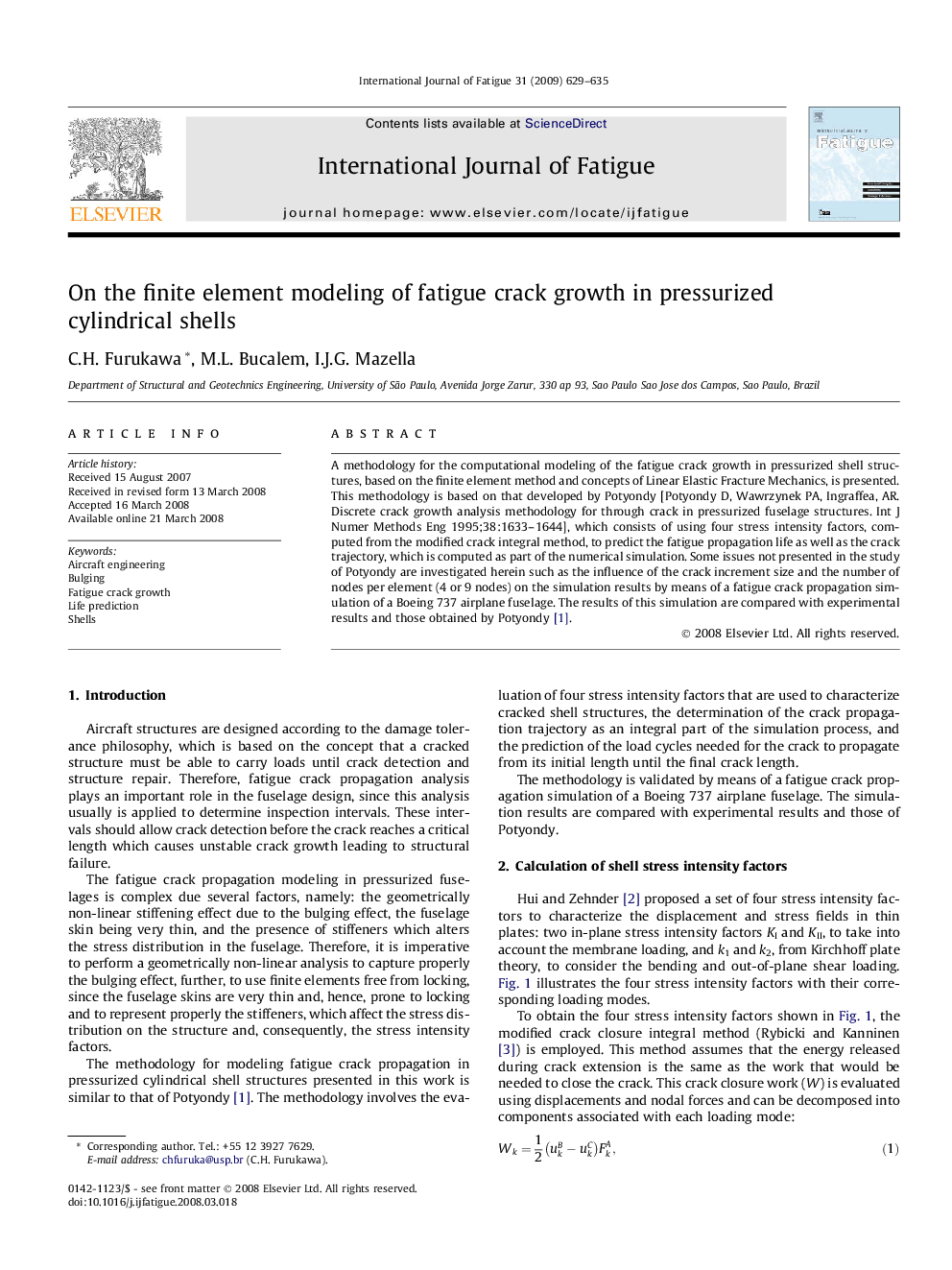| Article ID | Journal | Published Year | Pages | File Type |
|---|---|---|---|---|
| 781554 | International Journal of Fatigue | 2009 | 7 Pages |
A methodology for the computational modeling of the fatigue crack growth in pressurized shell structures, based on the finite element method and concepts of Linear Elastic Fracture Mechanics, is presented. This methodology is based on that developed by Potyondy [Potyondy D, Wawrzynek PA, Ingraffea, AR. Discrete crack growth analysis methodology for through crack in pressurized fuselage structures. Int J Numer Methods Eng 1995;38:1633–1644], which consists of using four stress intensity factors, computed from the modified crack integral method, to predict the fatigue propagation life as well as the crack trajectory, which is computed as part of the numerical simulation. Some issues not presented in the study of Potyondy are investigated herein such as the influence of the crack increment size and the number of nodes per element (4 or 9 nodes) on the simulation results by means of a fatigue crack propagation simulation of a Boeing 737 airplane fuselage. The results of this simulation are compared with experimental results and those obtained by Potyondy [1].
